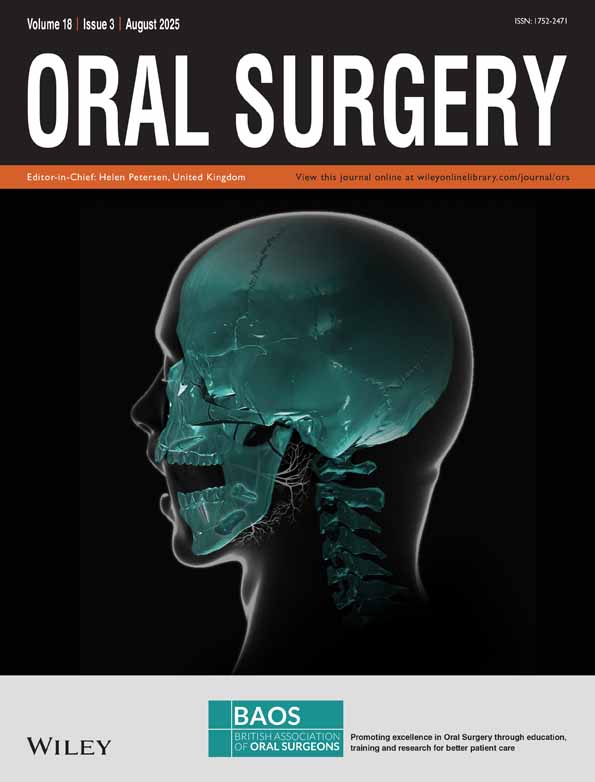Service Evaluation of MRI Prescribing in the Investigation of Temporomandibular Disorders at the Royal National ENT and Eastman Dental Hospitals
Funding: The authors received no specific funding for this work.
ABSTRACT
Introduction
To investigate current clinical practice in the requesting of magnetic resonance imaging (MRI) for temporomandibular disorders (TMDs) within a hospital-based oral surgery unit.
Methods
A retrospective evaluation of patients referred for an MRI scan as part of their TMD management was conducted using information from electronic clinical records. Clinical records were reviewed to assess the patients' presenting complaints, symptomatology, clinical findings, timeline for completion of the MRI scan, MRI findings and subsequent patient management.
Results
Fifty-two patients with TMD underwent an MRI scan as part of their management, with the majority presenting with concerns of pain in the jaw/face (85%), jaw clicking (60%) and jaw locking (44%). At least one temporomandibular joint (TMJ) was radiologically normal in 37% of cases. Abnormal radiological findings included osseous irregularity (52%), reduced disc displacement (44%) and non-reduced disc displacement (25%). Incidental findings were observed in 15% of the TMJ MRIs. Seventy-two percent had an arthrogenous form of TMD, of which 73% were referred to OMFS. It was determined that 70% of these patients were deemed unlikely to respond to surgical treatment such as arthrocentesis or arthroscopy, and the risks of providing such treatment were felt to outweigh any benefit. Thirty percent of patients referred onwards to OMFS underwent surgical intervention, including arthroscopy and intramuscular botulinum toxin A injections. MRI reports for patients suitable for surgical management showed that 100% had unilateral or bilateral radiological evidence of reduced condylar head anterior translation in addition to a non-reducing articular disc. The results of the service evaluation were analysed by a local focus group within the Oral Surgery Unit, following which a local departmental proforma and selection criteria for TMJ MRI prescribing were introduced.
Conclusions
MRI findings should be considered alongside the patient's symptomology and clinical presentation to facilitate holistic patient care. Analysis of MRI prescribing practices and subsequent patient management within the Oral Surgery Unit indicated a scope to streamline clinical practice to ensure compliance with evidence-based practice.
Conflicts of Interest
The authors declare no conflicts of interest.
Open Research
Data Availability Statement
The authors have nothing to report.




